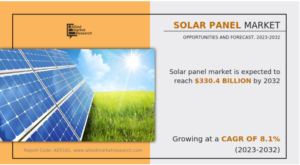The Facts Tell The Real Story About The Clean Energy Economy

PLEASANTON, CA – Employees of SPG Solar mount a photovoltaic panel on rooftops in Pleasanton, California. (Photo by Robert Nickelsberg/Getty Images)
Getty Images
While there is lots of troubling news coming at us, the good news stories seem to get lost.
Given how quickly the political winds on clean energy have shifted in the U.S. over the past year, it’s easy to lose sight of the continued momentum.
But focus on the facts, not the rhetoric, and you see the real story. Investors and companies are making choices driven by innovation, efficiency, opportunity, and profitability. And I, along with many of these leaders, will be at Climate Week in New York City next week, underscoring how seriously they’re pursuing these opportunities.
The headwinds are real, with the federal government actively opposing clean energy. And with special interests waging a politically driven campaign to force investors to ignore climate risks, introducing hundreds of state laws to control private investment strategy.
But alongside this turbulence, the market forces driving the clean economy remain undeniable. Rising energy demand and spiking costs. Weather damage topping $93 billion in just the first half of this year. Fierce global competition in markets from batteries to sustainable agriculture. And an urgent need to cut pollution and safeguard natural resources that businesses rely on.
Opportunities and choices
These forces bring both opportunities and choices for investors and businesses to double down, shape policy, and accelerate cost reductions and innovation that benefits consumers and creates good paying jobs.
They are why solar investment—the most cost effective and fastest energy to deploy– held steady this year this year in the U.S. despite federal backsliding and why more solar and battery capacity is expected to be installed in the U.S. over next three years than at any other time in the past. Texas leads the nation, ranking first in both utility-scale solar and land-based wind capacity. Globally, clean energy and grid investments are projected to reach $2.2 trillion in 2025—twice the amount expected to flow into fossil fuels this year
They are reflected in the strategic planning and capex decisions companies are making to compete in an advanced global economy and deliver returns for their investors. According to PWC, 84% of corporations are standing by their goals for cutting carbon pollution, and 37% are increasing their ambitions, because they know that climate solutions are good for business. A Morgan Stanley survey finds that 88% of companies see sustainability as a driver of long-term value, and more than 80% can track measurable ROI on their projects. Sustainability is no longer about compliance—it’s about profit and resilience.
Risk management tells the same story. Some 61% of business leaders expect rising climate disruptions to create costs, with over half building adaptation and resilience into strategies. And 92% of businesses say the cost of inaction to their business will be higher than the cost of transition, compounding risk and hindering growth.
Winners and Losers
Right now, the U.S. federal government is in retreat, ceding the lead to other countries, China chief among them. The setback threatens American companies’ ability to compete and scale homegrown manufacturing in growing markets, from batteries to electric vehicles. It also creates harmful friction for utilities eager to adopt the cheapest, most readily available energy to power AI—just when the technology’s expansion depends on speed and competing demand is driving energy costs up.
Momentum alone won’t secure America’s leadership. What happens next depends on choices—by businesses and investors to press for smarter policy, expand markets, and prove that clean energy is the most competitive path forward.
Lean into the states
The biggest opportunity to sustain the clean energy boom and reduce pollution lies with the states, where forward-looking policies can help companies, investors, and consumers. For example, more than 40 businesses, including IKEA U.S, Sierra Nevada Brewing Company, and REI Co-op, are urging California to strengthen its cap-and-trade program. This market-based approach, long recognized as the most efficient and affordable way to cut carbon pollution, has fueled private investment, created good-paying jobs, funded programs that lower energy bills, and kept California competitive as the world’s fourth largest economy.
Continue championing efforts to protect core American freedoms
Since 2023, more than 400 bills have been introduced to ban investment and business strategies that consider all financial risks and opportunities in decision-making, including those related to climate risks, supply chains, and governance. Fewer than 8% have passed—largely due to fears of market distortion, higher costs, and dangerous precedent. But the push continues and so does the need to aggressively counter it.
Keep engaging on federal policy
Federal backsliding is a material setback not just for U.S. clean energy growth, but the government’s own security, energy, and manufacturing goals. Over the next year, the private sector can continue laying out this reality to Congress. Businesses are already mobilizing to push for the U.S. Environmental Protection Agency to uphold the greenhouse gas Endangerment Finding to protect the stable policy environment that businesses need to invest confidently in critical 21st industries. And with Trump’s budget bill now passed, members of Congress are already acknowledging they will need to address surfacing problems.
Industry leaders can help shape solutions by advocating for policies that meet rising energy demand and combat rising electricity prices through new transmission infrastructure and permitting that includes clean energy. And by extending and simplifying wind and solar tax credits, which President Trump’s budget bill sharply curtailed.
And above all stay the course
After years of predictions, the clean energy boom is no longer on the horizon—it’s here. The task now is to build on this momentum: accelerate transition plans, deliver for shareholders, employees, and customers, and keep driving down the costs of innovations from EVs to heat pumps. Above all, speak up and make it clear to consumers how these solutions improve their lives. The only real question is whether the U.S. chooses to lead or be left behind.






